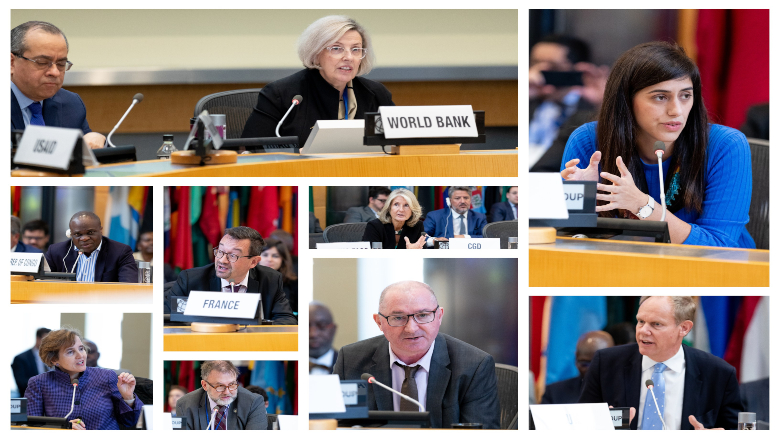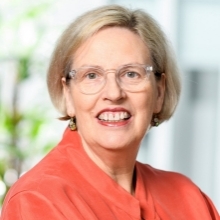Established in consultation with the International Monetary Fund (IMF), UNESCO, the Education Commission, the Global Partnership for Education, and the Organisation for Economic Co-operation and Development (OECD), the Education Finance Platform seeks to create tools, build an evidence base, and provide technical support to ensure that education systems are adequately funded and funds used equitably and efficiently. It will mobilize experts, including in fiscal policy and financial management, to work with education and finance ministries in low- and middle-income countries.
"The Platform is very important for getting the main actors working together to ensure countries have a more integrated approach to financing development," said David Coady, Assistant Director for IMF's Fiscal Affairs Department. "We need to bring the discussion down where knowledge of best practices really meets reality in the countries."
"We have two planets" in terms of education spending," said Jaime Saavedra, head of the Bank's Education Global Practice. While low-income country spending has doubled to $200 per child per year since the late-1990s, the figure pales in comparison to the $8,000 spent by high-income countries. "Money has to be well spent, but the differences in what is invested in children across countries are incredibly big," he said. While development assistance is important for some countries, mobilizing more domestic resources and making better use of them is central to tackling learning poverty.
In the Democratic Republic of the Congo, four million children are out of school, mainly because families can't afford the fees. The government has introduced free basic education and salary increases for teachers, but "we need adoptable and sustainable fiscal measures" to help pay for these reforms, said panelist Willy Bakonga Wilima, Minister of Primary, Secondary, and Technical Education.
Paraguay has designated a $1 billion trust fund drawing from natural resources-related revenues to promote research and education excellence, and it is developing an ambitious roadmap for education reform. "If we ask society to give more money, we need to put it into a better education system," Finance Minister Benigno Lopez said in an interview. To that end, the government is seeking to focus more on data, assessments, and results.
Other challenges facing education and education finance systems include policies that are not fiscally sustainable or evidence-based; poor-quality services for low-income countries and poor communities within countries; and ineffective use of resources due to lack of capacity and other factors. "What we see in education is that the tools are not nearly as voluminous as they need to be," said Alice Albright, Chief Executive Officer of the Global Partnership for Education. "We need to lean into innovative finance."
This is where the Education Finance Platform can help. It will organize around four pillars: matching sustainable financing to needs; improving efficiency, equity, and financial management; strengthening accountability with better data and monitoring; and building capacity and knowledge. Initially, countries will receive support to develop credible financing strategies to achieve national education goals and reduce learning poverty. (The new World Bank goal is to reduce by at least half the share of 10-year-olds who can't read by 2030.) A key element of the Platform will be to identify the cost for each country to assemble a minimum package of services to accomplish this. The Platform will also develop toolkits that policy makers can use to strengthen their education finance systems.
And it will promote more effective ways to monitor and gather better data on spending by supporting the development of national education accounts and publishing an annual report on global education financing. Barbara Bruns, a Center for Global Development Visiting Fellow, agreed that "better data and evidence are key for more effective financing." She has worked with Peru and other countries to boost learning outcomes based on analysis of student, teacher, and financing data at local and school levels. "These are the building blocks that allow governments to make funding more equitable, create incentives for performance, and evaluate the cost-effectiveness of new programs," she said. "And smarter spending means bigger impact on learning."
Peru offers an example of how education financing reforms like those under the Platform can lead to better learning outcomes. The country has boosted funding and introduced results-based budgeting in education, and consequently its international and national test scores have improved. Finance Minister Maria Antonieta Alva said strong cooperation between the finance and education ministries contributed to Peru's success. "In the Ministry of Finance, we build performance-based programs for education. We also build independent evaluations and help in the construction of data."
The Education Finance Platform will help stakeholders shift their view of education financing as an expenditure to "an investment with long-term impact" and put the emphasis not only on quantity but also on quality of education service delivery, said Cyrille Pierre, France's Deputy Director General for Globalization. Matthew Rycroft, Permanent Secretary for the U.K.'s Department for International Development, advocated focusing reforms on three areas: ensuring the large financing uplift necessary; directing funds where needed on a country-specific basis; and following the evidence. "Financing is a big part of the scale of the challenge," he said. The question to answer is, "What works at low cost and high effectiveness in education?"



